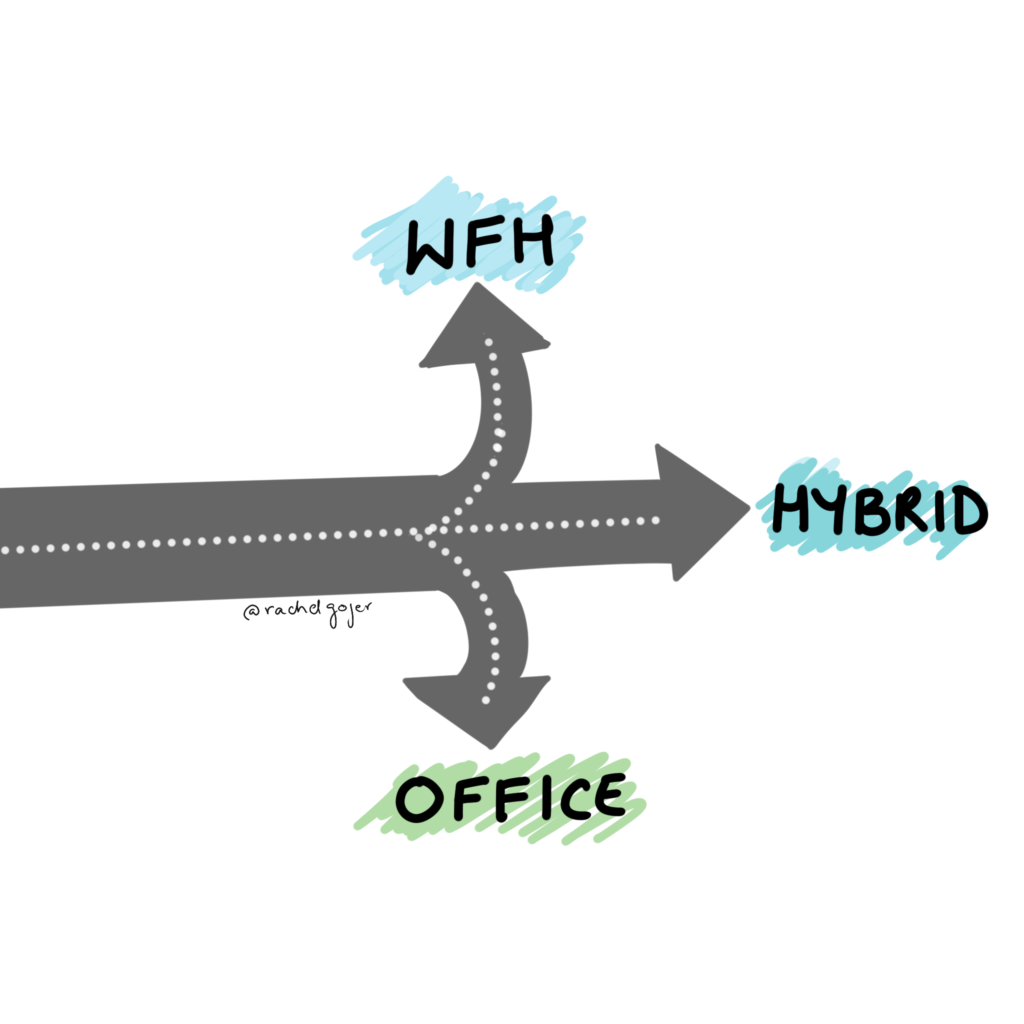In the last two years, we seem to have gone through multiple cycles of:
- The pandemic is over; let’s slowly get back to the office.
- Ohshit! It’s back let’s go back to remote work
- Now the pandemic is over let’s slowly get back to the office in phases
- No, it’s back again!
- Repeat step 1
And two years later it seems like an unending cycle.
Just when we start figuring out what normal is it shifts and we start trying to relate to the next normal.
Most of us are also grappling with a whole bunch of “should we or should we” not situations?
There are decisions hanging in the midst of all this
Like should we rent more office space? Or not.
If we rent space should we invest in the infrastructure? Or not.
Should we insist our employees move back from their home towns? Or not.
Should we go 100%remote? Or not.
Should we do hybrid like everyone is saying? Or not.
Every decision has a business impact and there are no clear answers.
And there is definitely no one answer.
Like any strategy, there are pros and cons to all approaches.
Here are my suggestions for the factors you should consider while deciding on your approach to the next normal.
- Employee well being: There are two different preferences to consider here. Some employees find that they can manage their work-life balance much better when they WFH. They are also able to perform better when they find more balance. If their families are located in cities other than their organization they are able to get the best of both worlds. For others, WFH comes at the cost of interaction with their teams. Some people feel more stressed when the boundaries of work and home blur. For some employees especially those who live alone the lack of human connection is difficult. Employees who have joined organizations post covid are feeling a low sense of connection to their workplaces. The hybrid approach comes with the intent of catering to both these camps. And many organizations are trying to offer the choice to the employee where possible.Wherever WFH is a long term strategy, organizations need to come up with more creative solutions for managing employee connection and engagement.
- Performance and productivity management: Tasks that are measurable and easy to track are best suited for remote work. On the other hand, tasks that require collaboration by many people may not always work so well in a remote environment. Tasks that require physical and manual work e.g. manufacturing cannot work remotely. A robust performance measurement system makes it easy to plan, manage and track performance in remote environments. If you are considering work from home as a permanent or partial option then investing in an effective performance management system is critical.
- Cybersecurity: Not all businesses can afford the security risk of home networks and unstable connections. Any security breach also has a significant impact on brand image, customer confidence and future business. Investments in strong remote security systems require significant cost and technical expertise and may not always be feasible for all organizations. But any work from home strategy cannot afford to ignore this aspect. And businesses dealing with sensitive customer data need to be extra cautious in protecting their data from any breach.
- Leadership challenges: Leadership has always been a contact sport. But as we have seen in the last year leaders must now adopt new skills to be effective virtually. This involves significant changes in the way leaders communicate with the teams, motivate their employees and manage performance. If a leader’s strength is personal connection and charisma this also means that achieving the same virtually can be a challenge. Organizations will need to support leaders in developing skills for virtual management and getting more effective remotely.
- Cost: There is a huge trade-off in big cities where cutting the investment in office real estate can be a huge cost saver. As businesses recover from the economic impact of Covid 19 this is a huge motivator for some organizations. The trade-off between the cost of real estate vs the investment in training and technology is a good way to decide the strategy that is right for you.
How do these parameters apply to your organization?
Are there other parameters that affect you as well?
What does your next normal look like?

